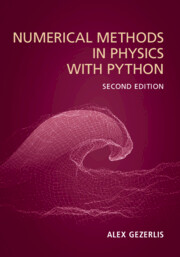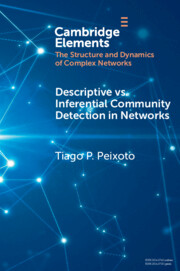Refine search
Actions for selected content:
26 results
Probability matching and statistical naïveté
-
- Journal:
- Judgment and Decision Making / Volume 20 / 2025
- Published online by Cambridge University Press:
- 26 September 2025, e37
-
- Article
-
- You have access
- Open access
- HTML
- Export citation
1 - Introduction
-
- Book:
- Dependence Models via Hierarchical Structures
- Published online:
- 20 March 2025
- Print publication:
- 27 March 2025, pp 1-22
-
- Chapter
- Export citation
Decoupling Visualization and Testing when Presenting Confidence Intervals
-
- Journal:
- Political Analysis / Volume 33 / Issue 3 / July 2025
- Published online by Cambridge University Press:
- 17 January 2025, pp. 252-257
-
- Article
-
- You have access
- Open access
- HTML
- Export citation
Post-selection Inference in Multiverse Analysis (PIMA): An Inferential Framework Based on the Sign Flipping Score Test
-
- Journal:
- Psychometrika / Volume 89 / Issue 2 / June 2024
- Published online by Cambridge University Press:
- 27 December 2024, pp. 542-568
-
- Article
- Export citation
STATISTICAL ANALYSIS ON COMPLEXLY STRUCTURED DATA
-
- Journal:
- Bulletin of the Australian Mathematical Society / Volume 111 / Issue 1 / February 2025
- Published online by Cambridge University Press:
- 25 November 2024, pp. 184-185
- Print publication:
- February 2025
-
- Article
-
- You have access
- HTML
- Export citation

Numerical Methods in Physics with Python
-
- Published online:
- 30 August 2023
- Print publication:
- 20 July 2023
6 - Bivariate Regression and Correlation and Statistical Inference
-
- Book:
- Applied Regression Models in the Social Sciences
- Published online:
- 17 August 2023
- Print publication:
- 17 August 2023, pp 88-124
-
- Chapter
- Export citation

Descriptive vs. Inferential Community Detection in Networks
- Pitfalls, Myths and Half-Truths
-
- Published online:
- 04 July 2023
- Print publication:
- 31 August 2023
-
- Element
-
- You have access
- Open access
- HTML
- Export citation
4 - Statistical Inference
-
- Book:
- Introduction to Environmental Data Science
- Published online:
- 23 March 2023
- Print publication:
- 23 March 2023, pp 101-136
-
- Chapter
- Export citation
4 - Of Dice and Men*
-
- Book:
- Dicing with Death
- Published online:
- 18 November 2022
- Print publication:
- 08 December 2022, pp 74-96
-
- Chapter
- Export citation
The Essential Role of Statistical Inference in Evaluating Electoral Systems: A Response to DeFord et al.
-
- Journal:
- Political Analysis / Volume 31 / Issue 3 / July 2023
- Published online by Cambridge University Press:
- 02 December 2021, pp. 325-331
-
- Article
- Export citation
8 - Graph-Theoretic Analysis of Power Grid Robustness
- from Part II - Data-Driven Anomaly Detection
-
-
- Book:
- Advanced Data Analytics for Power Systems
- Published online:
- 22 March 2021
- Print publication:
- 08 April 2021, pp 175-194
-
- Chapter
- Export citation
Learning socio-organizational network structure in buildings with ambient sensing data
-
- Journal:
- Data-Centric Engineering / Volume 1 / 2020
- Published online by Cambridge University Press:
- 02 October 2020, e9
-
- Article
-
- You have access
- Open access
- HTML
- Export citation
Rejoinder to Daniel Stegmueller's Comments
-
- Journal:
- British Journal of Political Science / Volume 51 / Issue 1 / January 2021
- Published online by Cambridge University Press:
- 13 May 2020, pp. 460-462
-
- Article
-
- You have access
- Open access
- HTML
- Export citation
Multilevel Analysis with Few Clusters: Improving Likelihood-Based Methods to Provide Unbiased Estimates and Accurate Inference
-
- Journal:
- British Journal of Political Science / Volume 51 / Issue 1 / January 2021
- Published online by Cambridge University Press:
- 13 May 2020, pp. 412-426
-
- Article
-
- You have access
- Open access
- HTML
- Export citation
A question of logic: experiments cannot prove lack of an herbicide-resistance fitness penalty
-
- Journal:
- Weed Science / Volume 68 / Issue 3 / May 2020
- Published online by Cambridge University Press:
- 06 April 2020, pp. 197-198
-
- Article
-
- You have access
- HTML
- Export citation
Penn State Summer Schools
-
- Journal:
- Proceedings of the International Astronomical Union / Volume 15 / Issue S367 / December 2019
- Published online by Cambridge University Press:
- 23 December 2021, pp. 413-414
- Print publication:
- December 2019
-
- Article
-
- You have access
- Open access
- Export citation
MODELING THE NUMBER OF INSURED HOUSEHOLDS IN AN INSURANCE PORTFOLIO USING QUEUING THEORY
-
- Journal:
- ASTIN Bulletin: The Journal of the IAA / Volume 46 / Issue 2 / May 2016
- Published online by Cambridge University Press:
- 28 March 2016, pp. 401-430
- Print publication:
- May 2016
-
- Article
- Export citation
Presenting parasitological data: the good, the bad and the error bar
-
- Journal:
- Parasitology / Volume 142 / Issue 11 / September 2015
- Published online by Cambridge University Press:
- 29 June 2015, pp. 1351-1363
-
- Article
- Export citation
Large scale spatio-temporal patterns of road development in the Amazon rainforest
-
- Journal:
- Environmental Conservation / Volume 41 / Issue 3 / September 2014
- Published online by Cambridge University Press:
- 02 December 2013, pp. 253-264
-
- Article
-
- You have access
- HTML
- Export citation
